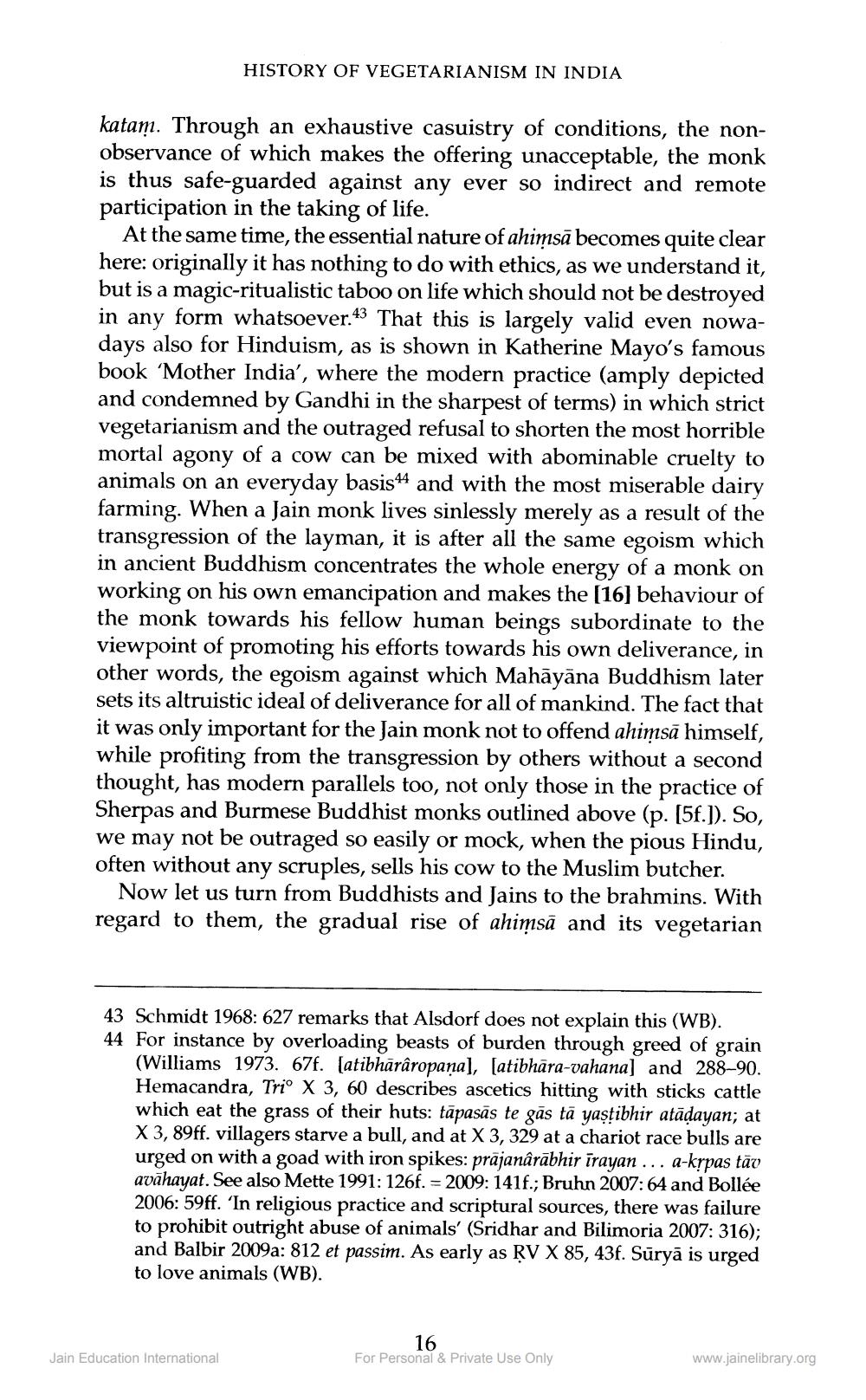________________
HISTORY OF VEGETARIANISM IN INDIA
katam. Through an exhaustive casuistry of conditions, the nonobservance of which makes the offering unacceptable, the monk is thus safe-guarded against any ever so indirect and remote participation in the taking of life.
At the same time, the essential nature of ahimsā becomes quite clear here: originally it has nothing to do with ethics, as we understand it, but is a magic-ritualistic taboo on life which should not be destroyed in any form whatsoever.43 That this is largely valid even nowadays also for Hinduism, as is shown in Katherine Mayo's famous book Mother India', where the modern practice (amply depicted and condemned by Gandhi in the sharpest of terms) in which strict vegetarianism and the outraged refusal to shorten the most horrible mortal agony of a cow can be mixed with abominable cruelty to animals on an everyday basis 44 and with the most miserable dairy farming. When a Jain monk lives sinlessly merely as a result of the transgression of the layman, it is after all the same egoism which in ancient Buddhism concentrates the whole energy of a monk on working on his own emancipation and makes the (16] behaviour of the monk towards his fellow human beings subordinate to the viewpoint of promoting his efforts towards his own deliverance, in other words, the egoism against which Mahāyāna Buddhism later sets its altruistic ideal of deliverance for all of mankind. The fact that it was only important for the Jain monk not to offend ahimsā himself, while profiting from the transgression by others without a second thought, has modern parallels too, not only those in the practice of Sherpas and Burmese Buddhist monks outlined above (p. (5f.)). So, we may not be outraged so easily or mock, when the pious Hindu, often without any scruples, sells his cow to the Muslim butcher.
Now let us turn from Buddhists and Jains to the brahmins. With regard to them, the gradual rise of ahimsā and its vegetarian
43 Schmidt 1968: 627 remarks that Alsdorf does not explain this (WB). 44 For instance by overloading beasts of burden through greed of grain
(Williams 1973. 674. (atibhārâropana], [atibhāra-vahana] and 288-90. Hemacandra, Trio X 3, 60 describes ascetics hitting with sticks cattle which eat the grass of their huts: tāpasās te gās tā yastibhir atādayan; at X 3,89ff. villagers starve a bull, and at X 3,329 at a chariot race bulls are urged on with a goad with iron spikes: prajanârābhir īrayan ... a-krpas tāv avāhayat. See also Mette 1991: 126f. = 2009: 141f.; Bruhn 2007: 64 and Bollée 2006: 59ff. 'In religious practice and scriptural sources, there was failure to prohibit outright abuse of animals' (Sridhar and Bilimoria 2007: 316); and Balbir 2009a: 812 et passim. As early as RV X 85, 43f. Sūryā is urged to love animals (WB).
16 For Personal & Private Use Only
Jain Education International
www.jainelibrary.org




